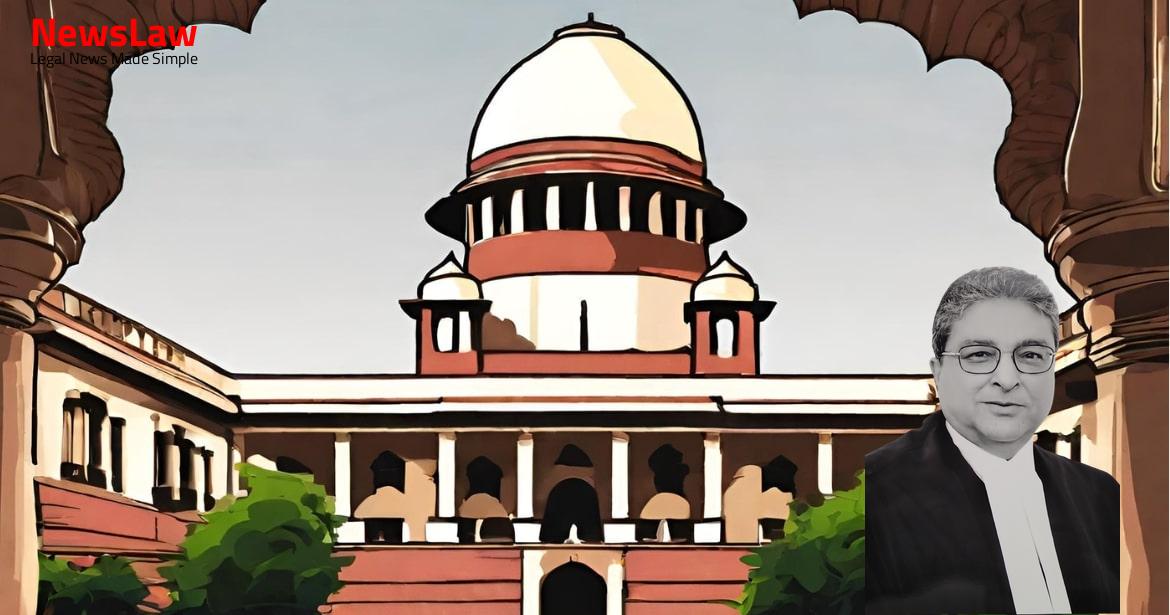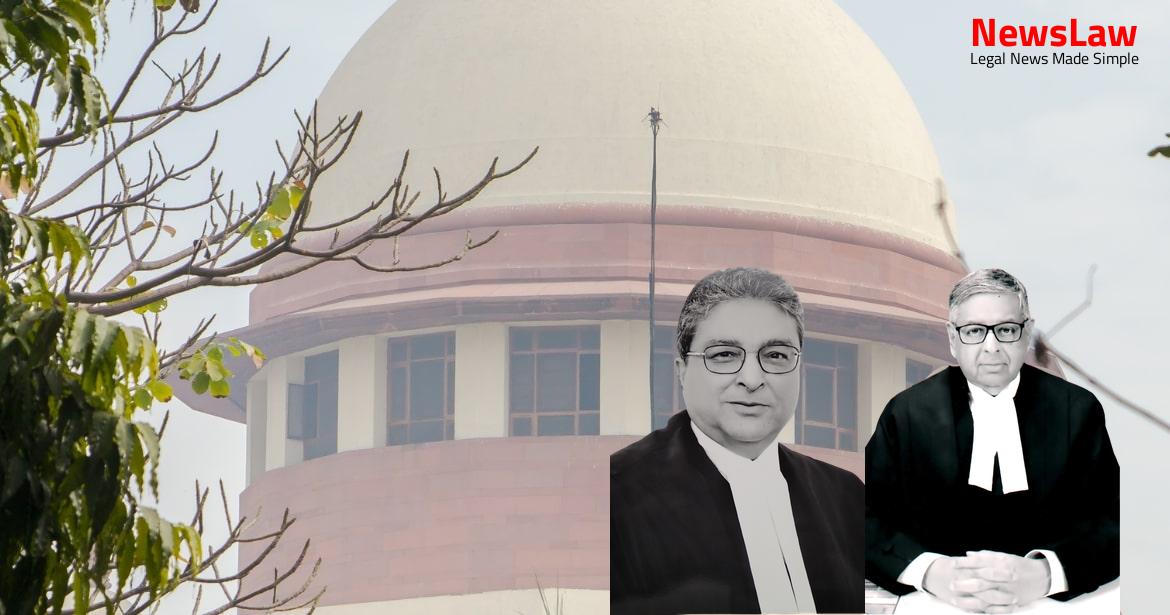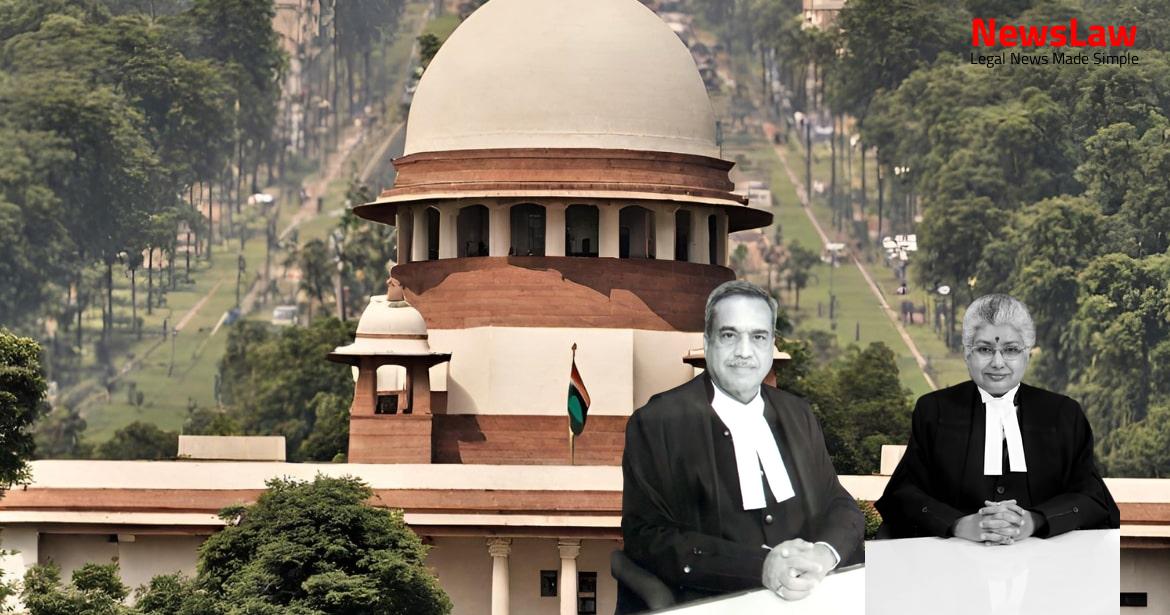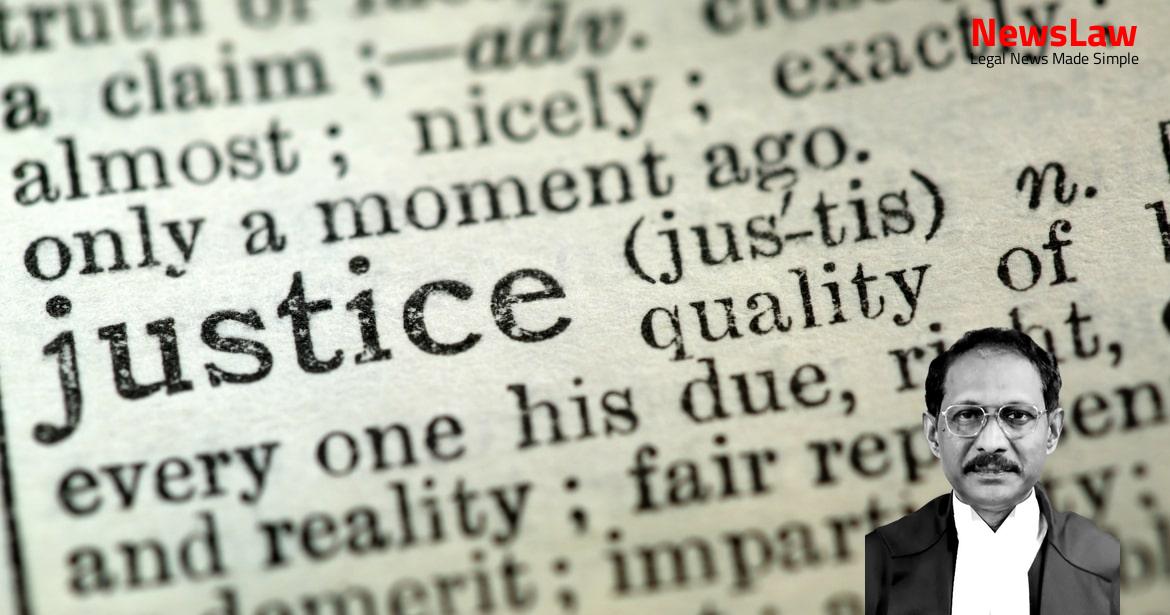In a recent landmark judgment by the Supreme Court of India, a Contempt Petition filed by Mr. Yogender Handoo against ARG_RESPONDENT was thoroughly examined. The Court’s ruling on the compliance of directions and the potential demolition of existing structures at the subject plot has significant implications. Stay informed about this crucial legal case and its implications with our exclusive summary.
Facts
- The High Court passed an interim order on 22.03.2002 restraining NDMC from giving effect to a certain letter from 23.05.2001.
- The complaint was lodged by the Conservation Assistant of ASI regarding the excavation and construction being undertaken in violation of the prohibition contained in a notification dated 16.6.1992.
- An appeal was filed against the order dated 30.10.2002, which was subsequently recalled.
- NMA cancelled a permission granted on 16.12.2013, stating it was erroneously granted.
- A local inspection conducted on 09.10.2018 found that the entire building was completely finished compared to the status observed during a previous Panchnama on 07.05.2003.
- The Division Bench of the High Court set aside the order issued by the Single Judge on 30.10.2002.
- The judgment dealt with appeals from ASI and Respondent No.5.
- The High Court restrained NDMC from taking any action on the property in question and stayed the Show Cause Notice.
- The Division Bench directed the Central Government to review the Notification regarding the 100 meters stipulation.
Also Read: National Task Force for Healthcare Safety: Ensuring Dignity and Protection for Medical Professionals
Arguments
- Mr. Nidhesh Gupta appeared as the learned Senior Advocate for the contempt petitioner Mr. Yogender Handoo.
- Arguments on behalf of the petitioner were presented by Mr. Nidhesh Gupta.
- The contentions raised by the contempt petitioner were put forth by Mr. Nidhesh Gupta, Senior Advocate.
- Mr. Nidhesh Gupta represented the petitioner and presented arguments before the court.
- The ARG_RESPONDENT has failed to comply with the directions given in the Judgment.
- The structure in existence at the site or in the subject plot needs to be demolished as per the prayer in the Contempt Petition.
- Action should be taken against the alleged contemnors for the violation of the directions.
Also Read: Railway Compensation Case: Supreme Court Judgment
Analysis
- Notification for declaration of prohibited or regulated area must be published in the Official Gazette with a one-month notice period
- Interested persons have the right to raise objections within the specified period
- The Central Government may declare the area as prohibited or regulated after considering objections received
- Only an archaeological officer can undertake mining operations or constructions in prohibited or regulated areas
- Definition of ‘ancient monument’ includes various structures or places of historical, archaeological, or artistic significance
- Protected monuments under the previous regime are deemed ancient monuments under the Act
- Rules specify the prohibited and regulated areas around ancient monuments
- Specific provisions outline repair and renovation activities in prohibited areas
- Exceptions allow for public works or projects in prohibited areas under certain conditions
- The Central Government has the authority to permit construction in prohibited areas based on public interest and preservation considerations
- The Judgment emphasized that in the garb of renovation, existing structures cannot be demolished to raise new ones.
- The Central Government or Director General cannot permit reconstruction by private individuals without public interest in mind.
- The High Court’s direction to review the notification dated 16.6.1992 was deemed unjustified.
- The concepts of ‘prohibited area’ and ‘regulated area’ were defined by the 2010 amendment to the Act.
- Permission for repairs/renovation was initially granted but later revoked; a contempt petition was filed alleging non-compliance with directives.
- The status of the existing structure at the time of the Judgment remains unclear, with no specific direction for demolition issued.
- Central Government’s actions under Sections 20A(3) and 20C must align with the judgment’s observations and public interest.
- The Court did not mandate demolition of the existing structure, given the lack of specific direction in the original judgment.
- The High Court’s interference on the review of the 1992 notification was seen as unwarranted given the Act’s preservation objectives.
- Authorities were not in violation of the orders passed by the Court with the passing of the order dated 27.06.2016
- Directions were given that authorities must not take any action or pass any order under Section 20A(3) and 20C of the Act except in accordance with the observations made in the Judgment
- Implementation of the directions is feasible
- The issue of whether permissions were rightly granted or not, and the impact of withdrawal or revocation of those permissions, must be considered in the pending matters
Also Read: Scheduled Castes Reservations: Sub-Classification Dispute
Decision
- Respondent Nos. 4 and 5 challenged the Show Cause Notice dated 29.01.2016 and the order dated 27.06.2016 by filing Writ Petition (C) No.7018 of 2016.
- ASI gave permission for renovation/repairs of the building at the subject plot based on NMA recommendations on 16.12.2013.
- Cancellation of Power of Attorney given to Respondent No. 4 on 12.01.2015 led to ASI cancelling the permission on 06.04.2015.
- Civil Suit No.211 of 2015 was filed seeking injunction against Respondent Nos. 4 and 5.
- Writ Petition No.3425 of 2016 was filed in the High Court of Delhi seeking directions against Respondent Nos. 1 to 3 to withdraw/revoke permission granted to Respondent Nos. 4 and 5 and to stop any work/construction on the subject plot.
- A show cause notice was issued on 29.01.2016 by NMA to Respondent Nos. 4 and 5 questioning the construction on the subject plot as it was neither existing on 16.06.1992, nor erected with the approval of Director General, ASI.
Case Title: SHIV DARSHAN SINGH Vs. RAKESH TIWARI DIRECTOR GENERAL,
Case Number: CONMT.PET.(C) No.-000697-000697 / 2017



